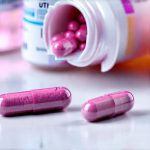Chronic prostatitis represents a significant challenge in men’s health, often characterized by persistent pelvic pain, urinary difficulties, and sexual dysfunction. Diagnosing this condition can be complex, as symptoms overlap with other conditions, and its underlying causes are frequently multifaceted. Traditional treatment approaches often yield limited or incomplete relief for many sufferers, leading to ongoing research into alternative and complementary therapies that might address the root mechanisms driving chronic prostatitis symptoms.
The elusive nature of chronic prostatitis – particularly Chronic Prostatitis/Chronic Pelvic Pain Syndrome (CP/CPPS) – has prompted investigation into biofilm-related theories. Biofilms are communities of microorganisms encased in a self-produced matrix, offering protection from antibiotics and immune responses. Recent studies suggest biofilms may play a role in the persistence of symptoms even after antibiotic treatment, leading to exploration of treatments specifically targeting these microbial structures.
Understanding Chronic Prostatitis & Biofilm Connection
Chronic prostatitis isn’t always caused by bacterial infection; it’s often categorized into different types. Category III, CP/CPPS, is particularly puzzling because a clear infectious agent isn’t consistently identified. However, growing evidence suggests that bacteria can still be present, not as freely floating organisms, but within biofilms adhered to the prostate gland or surrounding tissues. This changes how we think about treatment, moving beyond simply killing planktonic (free-floating) bacteria.
The biofilm environment drastically reduces antibiotic penetration and effectiveness. The protective matrix shields bacteria from immune cells and drug molecules. Even prolonged courses of antibiotics may fail to eradicate these deeply embedded communities, leading to recurring symptoms or persistent inflammation long after the initial infection seems treated. This is where biofilm disruption strategies come into play.
Exploring Biofilm Disrupting Therapies
The concept of targeting biofilms in chronic prostatitis isn’t new but gaining traction as research advances. A variety of approaches are being investigated, ranging from enzymatic treatments to alternative therapies aimed at weakening or breaking down the biofilm matrix. These aren’t necessarily replacements for conventional antibiotics, but potentially complementary strategies to enhance their efficacy or provide solutions when traditional treatments fail.
Enzymes and Biofilm Degradation
Enzymes like dispase, bromelain, and others have shown in vitro (laboratory) ability to degrade components of the biofilm matrix. Dispase, for example, targets extracellular matrix proteins that hold biofilms together. The idea is that by weakening the structure, antibiotics can more easily penetrate and eliminate the bacteria within. However, translating these results from lab settings into effective clinical treatments presents challenges. Delivery methods, enzyme stability in vivo (within the body), and potential side effects are areas needing further research.
The effectiveness of enzymatic treatment relies on delivering sufficient concentrations to the prostate gland while minimizing systemic exposure. Novel delivery systems, such as nanoparticle encapsulation or targeted injections, are being explored to address this challenge. Studies investigating the long-term impact of repeated enzyme use on the gut microbiome and overall health are also crucial considerations.
Natural Compounds with Anti-Biofilm Properties
Certain natural compounds have demonstrated anti-biofilm activity in laboratory studies. These include extracts from garlic, cranberry, resveratrol (found in grapes), and various essential oils. The mechanisms vary; some disrupt biofilm formation, others degrade existing biofilms, and still others enhance antibiotic effectiveness. While promising, the bioavailability of these compounds – how well they are absorbed and utilized by the body – is often limited.
Research on natural compounds is frequently hampered by inconsistencies in extraction methods and compound purity. Standardizing formulations and conducting rigorous clinical trials are essential to determine their true potential as biofilm-disrupting agents. Furthermore, interactions with other medications must be carefully evaluated before recommending these compounds as part of a treatment plan.
Adjunctive Antibiotic Strategies & Biofilm Penetration Enhancers
Even when conventional antibiotics aren’t fully effective against biofilms, combining them with agents that enhance penetration or disrupt the matrix can improve outcomes. Doxycycline, for example, has some inherent anti-biofilm properties at certain concentrations and can be combined with a biofilm dispersant like N-acetylcysteine (NAC). NAC helps to break down the extracellular polymeric substances forming the biofilm, allowing antibiotics better access.
Another strategy involves using higher doses of antibiotics for shorter periods, coupled with biofilm penetration enhancers. This approach aims to overwhelm the biofilm’s defenses while minimizing the risk of antibiotic resistance development. It’s important to note that prolonged or inappropriate use of antibiotics can contribute to resistance, so careful monitoring and individualized treatment plans are crucial.
The research surrounding biofilms in chronic prostatitis is continually evolving. While promising, it’s essential to remember that these treatments are often still under investigation and shouldn’t be considered a cure-all. The complexity of chronic prostatitis necessitates a comprehensive approach involving accurate diagnosis, individualized treatment plans, and ongoing monitoring. Further well-designed clinical trials are needed to definitively establish the role of biofilm disruption strategies in managing this challenging condition and improving outcomes for those affected.





















